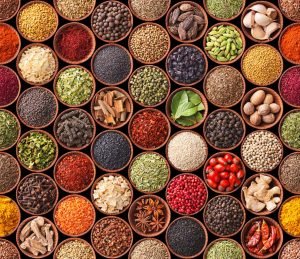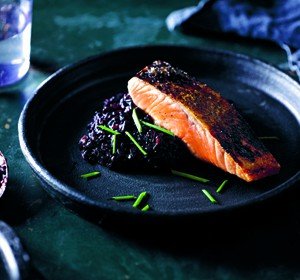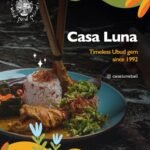Coconut, grated In Bali, fresh coconut is always the starting point for recipes featuring coconut – whether it is grated or in the form of coconut milk.
A coconut is split open and the flesh is priced out from the shell. The pieces are either left raw or roasted over a flame before being grated to add to salads or to use to make coconut milk. Away from the tropics, frozen pre-grated coconut is acceptable in recipes that call for grated coconut and can be found at Asian grocers. However, in recipes calling for fresh coconut to be roasted, it is best to seek out the real thing.
Coconut milk Making coconut milk from grated coconut is a simple process that involves mixing the coconut with water and wringing it out to produce milk.
See the recipe for Roasted Coconut Milk for full instructions. The process is second nature in Bali, but coconut milk in a tin or carton is acceptable elsewhere of course. Kara is a good brand and is found in a carton.
Or, as a better match to the texture of homemade coconut milk, you can buy light coconut milk if desired. Coconut oil Coconut oil is probably the most common cooking oil in Bali and is generally made at home. It has a mellow, sweet flavour and distinct aroma and is one of the keys to traditional roasted duck or suckling pig as well as many sambals.
While it is comprised of mainly saturated fats, studies have shown that the particular saturated fats (namely lauric acid) are beneficial, boosting the immune system. Make sure you buy virgin coconut oil that is unprocessed and unhydrogenated, because hydrogenated oils have trans-fats that cause health problems. Coconut oil is also a luscious skin moisturiser and hair conditioner and is preferred by older Balinese women for keeping their hair glossy and lustrous.
Coconut Crepes with Warm Mango Filing (Dadar Mango)
These delicate crepes are one of my favourite desserts.
Traditionally filled with warm banana or grated coconut (and I make savoury fillings too), I have taken the liberty to fill them with one of Bali’s favourite fruits – mango.
Mango trees are a feature of most Balinese household compounds and are synonymous with the wet season. The fruit is eaten either slightly unripe with lashings of chilli and shrimp paste, or ripe and sliced into cheeks. If you wish to add the distinct flavour and aroma of pandan to the crepes (as well as colour them green), add a teaspoon of pandan essence.
Crepes 150 g (1 cup) plain flour 1½ tablespoons white sugar ½ teaspoon sea salt 1 egg, lightly beaten 200 ml coconut milk ½ teaspoon vanilla extract 1 tablespoon lime juice (optional) vegetable oil, for frying Filling 3 large mangoes, sliced 3 tablespoons grated palm sugar 125 ml coconut milk 1 teaspoon vanilla extract 2 teaspoons grated lime zest.
Put the crepe ingredients other than the oil in a bowl and whisk together until smooth and free of lumps. Set aside while you make the filling.
Put the filling ingredients in a saucepan and cook over low heat for 3 minutes, or until the mango is soft. Set aside. Heat a non-stick frying pan over low heat.
Add a little oil and spread it across the base of the pan (I like to use a pastry brush), then add 1–2 tablespoons of the crepe batter and tilt the pan to spread the batter towards the edges, forming a thin crepe.
When bubbles appear on the surface, flip the crepe over and cook briefly on the other side. Remove to a plate and continue cooking crepes with the remaining batter, adding a drop more oil when necessary. Top each crepe with 2–3 tablespoons of warm filling and fold in half. > Makes 8 crepes







